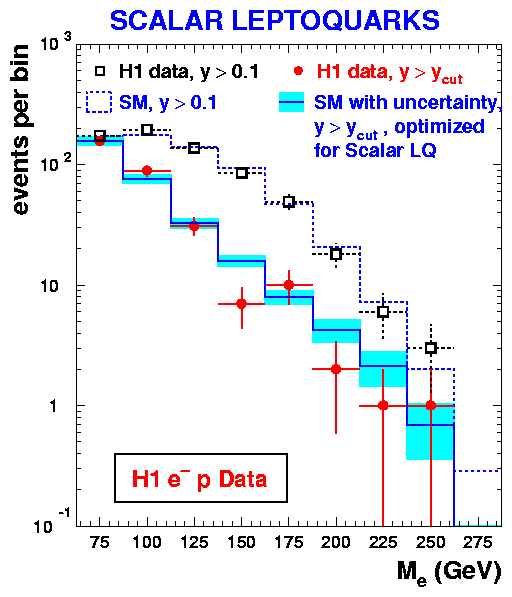A Search for Leptoquark Bosons in Electron-Proton Collisions at HERA |
 The
idea of this analysis is to directly produce these leptoquarks at the HERA
collider by colliding electrons with quarks obtained from a beam of protons.
The energies (E) of the electron and the quark then transform into the mass (M)
according to Einsteins equation E=M c2, where c is the speed of light. Measuring
the mass of the combined electron - quark system in a sample of such collisions
yields a mass distribution as shown here. A leptoquark should show up as
a significant peak on top of the distribution expected from Standard Model
processes (the lines in the figure). Unfortunately no such peak is seen
in the H1 data, so no leptoquarks are found.
The
idea of this analysis is to directly produce these leptoquarks at the HERA
collider by colliding electrons with quarks obtained from a beam of protons.
The energies (E) of the electron and the quark then transform into the mass (M)
according to Einsteins equation E=M c2, where c is the speed of light. Measuring
the mass of the combined electron - quark system in a sample of such collisions
yields a mass distribution as shown here. A leptoquark should show up as
a significant peak on top of the distribution expected from Standard Model
processes (the lines in the figure). Unfortunately no such peak is seen
in the H1 data, so no leptoquarks are found.